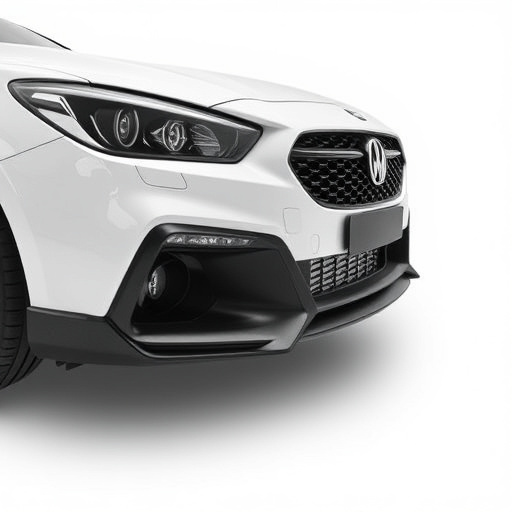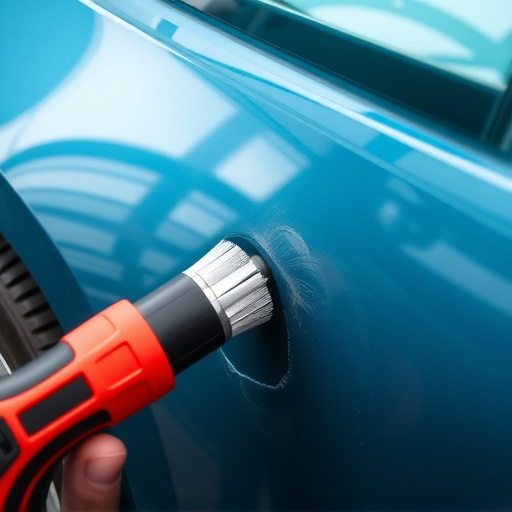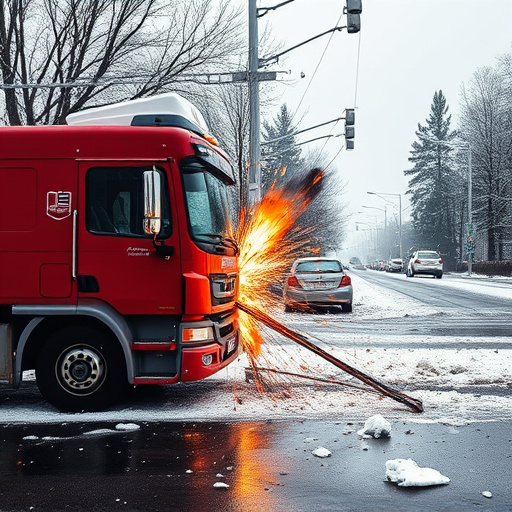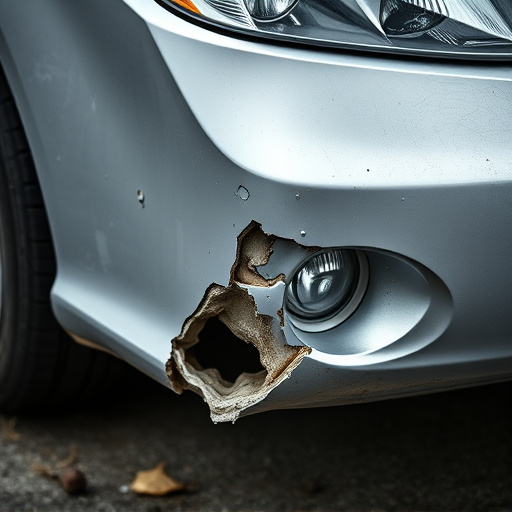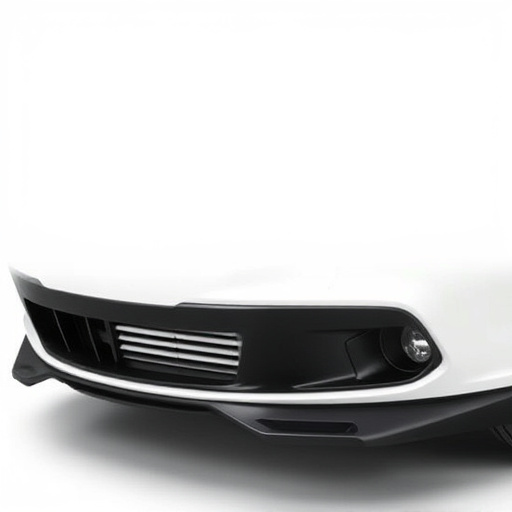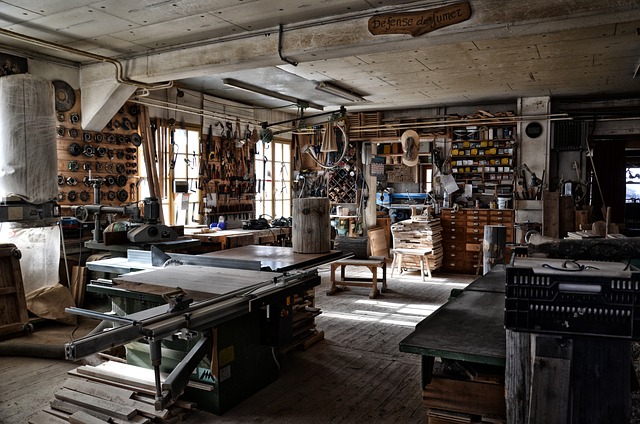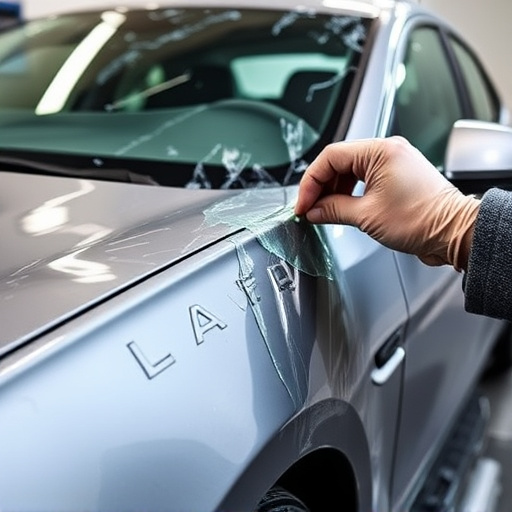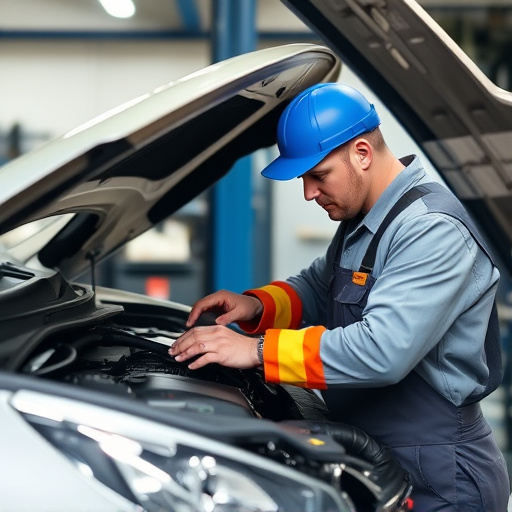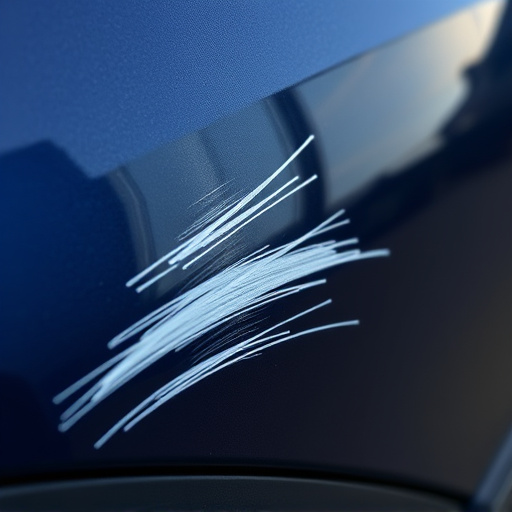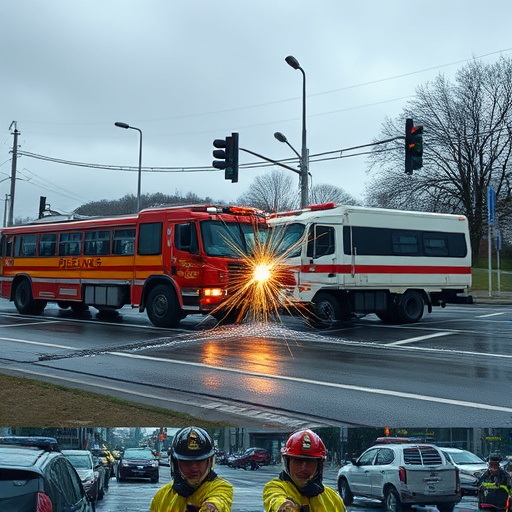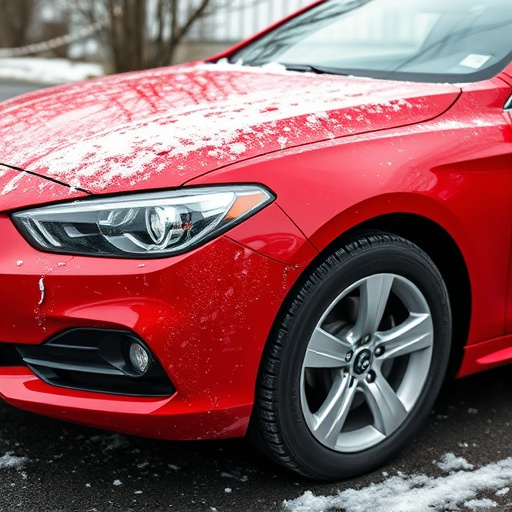PDR (Paintless Dent Repair) is an eco-friendly, efficient collision repair method that preserves a vehicle's original finish using specialized tools. Essential equipment includes plastic hammers, picks, pullers, tampons, foam pads, high-quality brushes, and a reliable air compressor. Mastering PDR techniques requires patience, practice, and understanding of tools like tabs, clamps, extractors, clear coat remover, and paint filler. Simple dents can be repaired with confidence, while complex ones may require professional guidance or training. PDR effectively repairs various vehicle areas, preserving the car's sleek appearance through seamless bodywork solutions.
“New to the world of paint restoration? This comprehensive guide is your gateway to mastering PDR (Paint Restoration/Detailing) techniques. Discover the fundamentals and immense advantages of this meticulous art, transforming dented or damaged automotive finishes into pristine perfection.
From essential tools to a step-by-step approach, we’ll walk you through the process. Learn how PDR techniques, focused on minimal material removal, offer a gentle yet effective way to revive your vehicle’s exterior, ensuring long-lasting results.”
- Understanding PDR: The Basics and Benefits
- Essential PDR Tools and Equipment
- Step-by-Step Guide to Mastering PDR Techniques
Understanding PDR: The Basics and Benefits

PDR, or Paintless Dent Repair, is a cutting-edge technique that has revolutionized the way collision repair shops handle car body restoration. Unlike traditional methods that often involve sandblasting and repainting, PDR uses specialized tools and skills to remove dents and dings from vehicle surfaces without damaging the surrounding paintwork. This not only saves time and money for both customers and collision repair professionals but also ensures a seamless and nearly invisible repair.
The benefits of PDR are multifaceted. For one, it’s an eco-friendly approach that reduces waste generated during conventional car paint services. By preserving the original factory finish, PDR maintains the car’s value and aesthetic appeal, making it a preferred choice for those who want to avoid extensive repainting. Moreover, PDR techniques can be performed quickly, allowing collision repair shops to accommodate more customers in less time without compromising on quality.
Essential PDR Tools and Equipment

When diving into PDR techniques (paintless dent repair), the right tools and equipment are crucial for achieving professional results. Essential items include a set of specialized dent removal tools, such as plastic hammers, picks, and pullers, designed to gently extract dents without damaging the car’s paint or surface. Additionally, you’ll need a variety of tampons and foam pads, which act as barriers between the tool and the vehicle, enabling precise control during the repair process.
For effective car scratch repair and auto body painting applications, consider investing in high-quality PDR brushes, cloth polishing pads, and a reliable air compressor. These tools facilitate thorough cleaning, preparation, and finishing of the repaired area, ensuring an indistinguishable blend with the surrounding paint job. An auto collision center’s expertise often relies on these essential PDR tools to deliver top-notch services, making them indispensable for any beginner looking to master paintless dent repair techniques.
Step-by-Step Guide to Mastering PDR Techniques

Mastering PDR (Paintless Dent Repair) techniques is a step-by-step process that requires patience and practice. Begin by understanding the basic tools and equipment needed for PDR, which include special dent removal tools, such as tabs, clamps, and extractors, along with a clear coat remover and paint filler. Once you have your supplies, start with simple dents to build confidence.
Follow these steps: identify the damage, clean and inspect the area, insert the tab of your tool beneath the dent, gently pry up and pull until the dent pops out, apply a thin layer of paint filler, and smoothen it for a seamless finish. For more complex dents, consider seeking guidance from an experienced professional or taking a training course specific to PDR techniques. This process is equally applicable to various areas of a vehicle, including doors, fenders, and even tires requiring minor services, ensuring your vehicle maintains its sleek appearance through effective collision repair and bodywork solutions.
PDR (Paintless Dent Repair) is a game-changing technique for automotive care, allowing professionals to remove dents and scratches without the need for painting. By mastering PDR techniques, you can enhance the appearance of vehicles, restore their original condition, and provide a cost-effective solution for common dent damage. This beginner’s guide has equipped you with the knowledge of essential tools, basic principles, and step-by-step methods, enabling you to confidently navigate the world of PDR techniques and achieve remarkable results.
